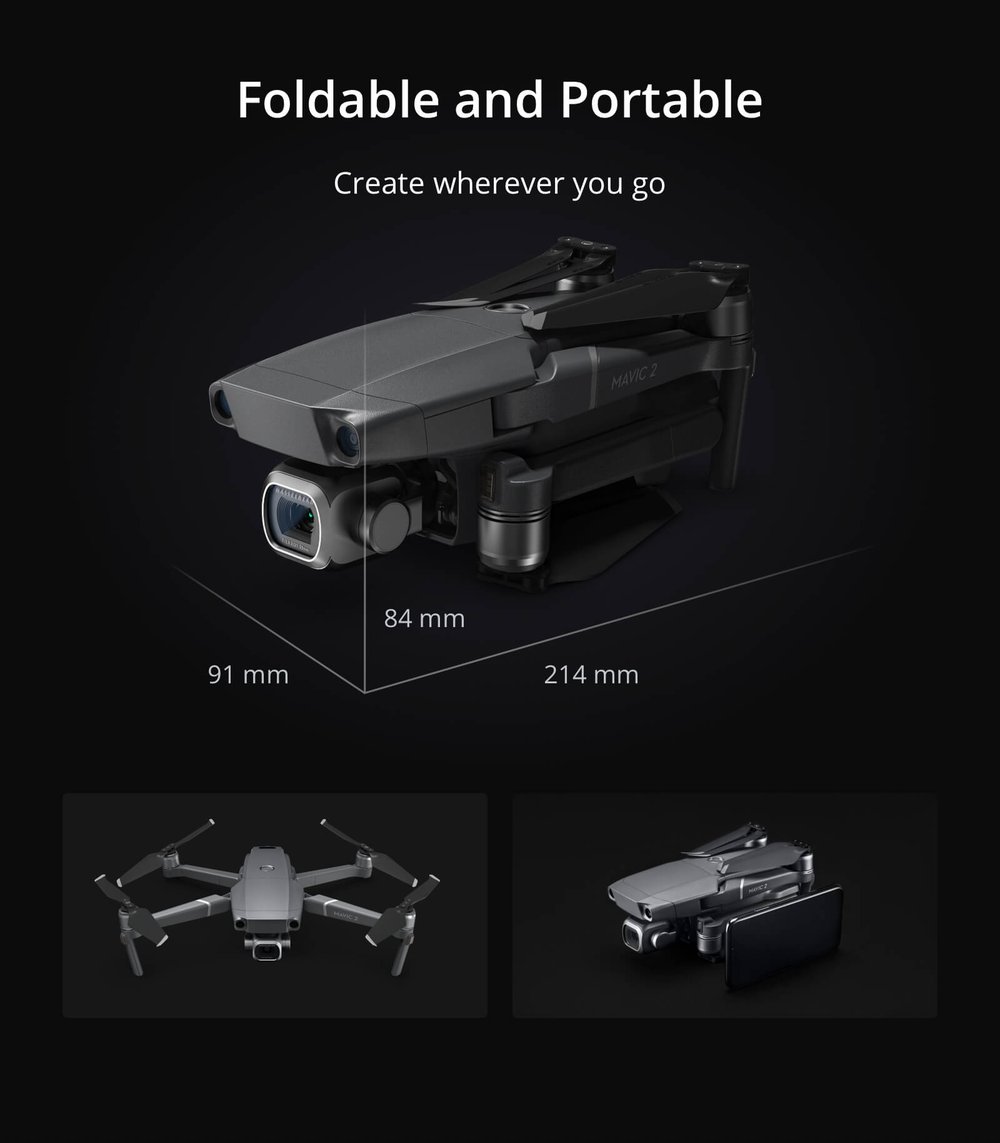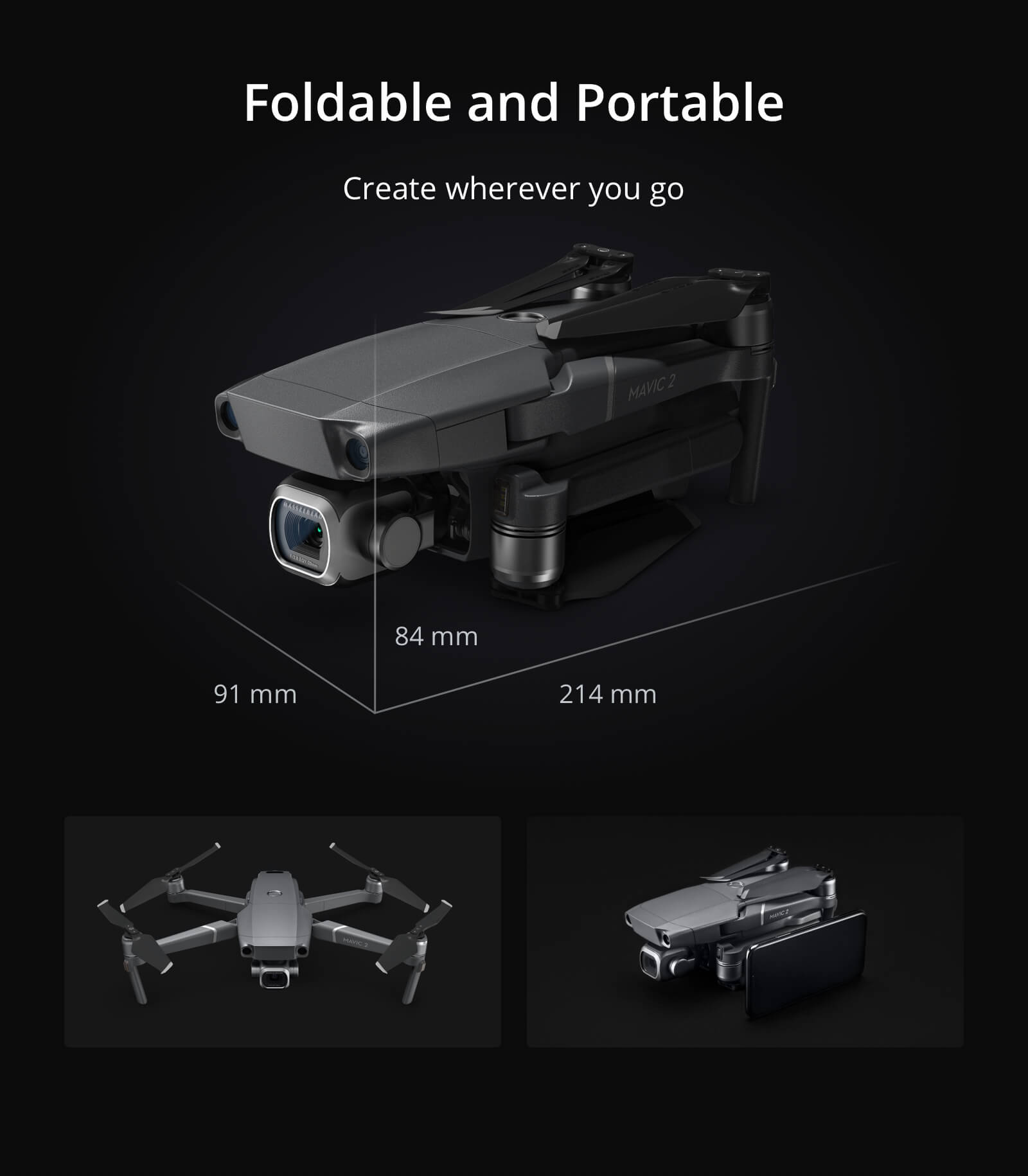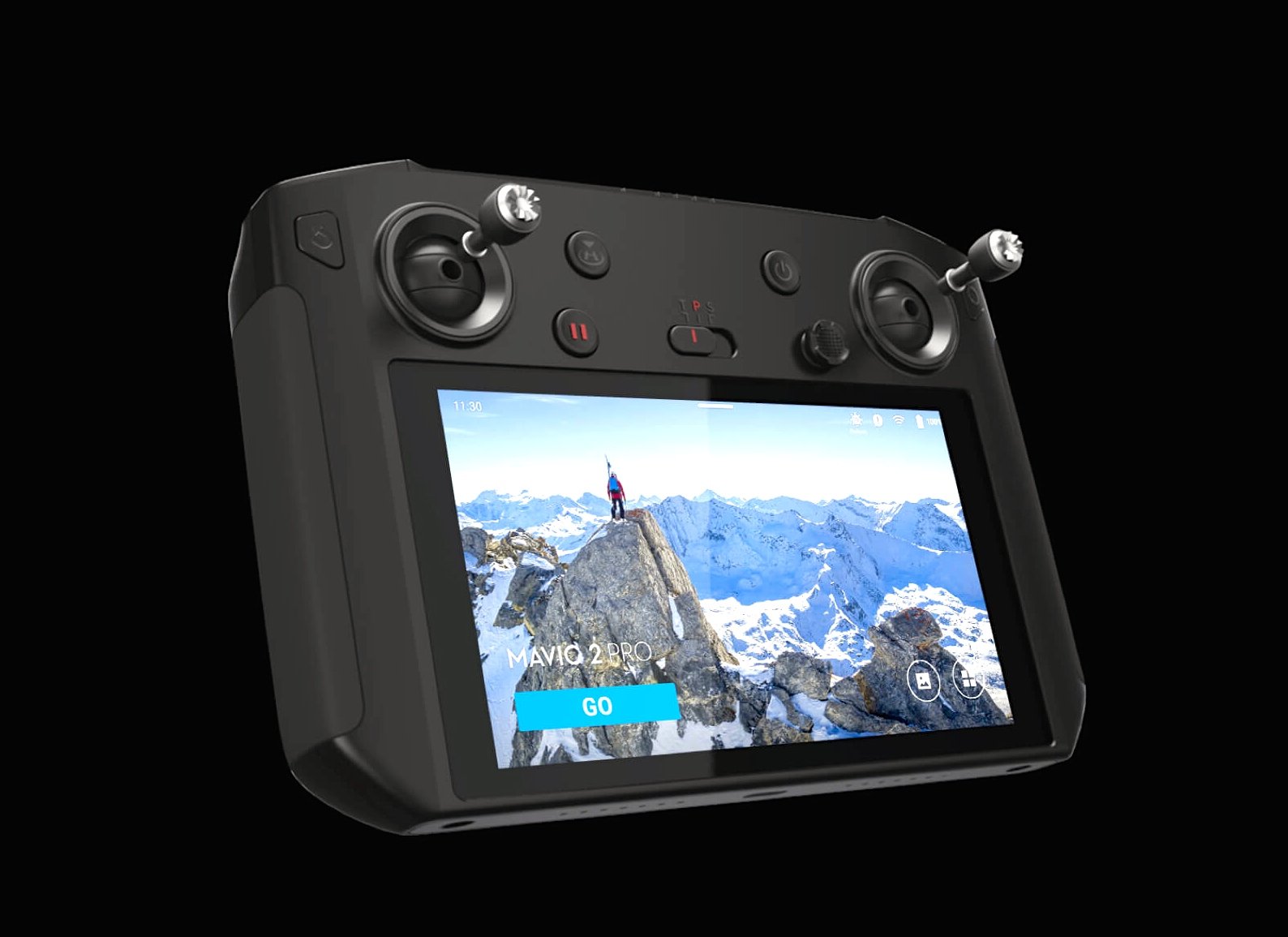Smart Controller Takes Mavic 2 Pro to New Level

We already know the Mavic 2 Pro is a world-class foldable quadcopter that’s a delight to fly. And we know its Hasselblad camera with 1-inch sensor and electronic shutter delivers stunning photos and video. But there’s a version that’s even better: the DJI Mavic 2 Pro with Smart Controller.
The drone itself is unchanged, but the remote controller is a major step up from the standard unit. It transforms flight with a host of features, including its most significant, a bright, built-in, high-resolution 5.5-inch monitor.

Smart—and Bright
The Smart Controller made everything easier. The Mavic 2 Pro with the Smart Controller costs $2,049, a savings of $299 over buying the aircraft and Smart Controller separately. Mavic 2 Pro with the standard controller is $1,599. The controller is available individually for $749 for use with the Mavic 2 series, which is equipped with the OcuSync 2.0 transmission system. DJI has said the Smart Controller will work with its future drones.
Not having to attach a smartphone or tablet was welcome. No cords, no device holder, no fuss. And I had no worries about smartphone battery reserve.
Daytime flying was a cinch without an awkward shade or hood. Screen brightness is 1,000 nits. The average smartphone is below 500, and the monitor on the controller of the comparably priced Autel Evo 2 Pro is just 330. The improvement with the DJI Smart Controller was evident, especially when the screen was awash in sunlight. I could have adjusted brightness manually, but the automatic adjustment worked well. And when I was done recording, the monitor was big and bright enough for previewing video on the controller, using the built-in speaker.
Controls are well-placed and comprehensive in their functions. First, the monitor is a touchscreen that’s more sensitive, if not brighter, than the Crystal Sky 5.5-inch and 7.8-inch monitor. Execution of onscreen commands was easy.
The removable joysticks had an impressively tactile quality, and a pair of spares was included. Sharing the face of the controller are buttons for power, flight mode, functions, Return to Home, Intelligent Flight Modes cancellation, and function confirmation, which is also customizable. A stubby 5D command stick quickly moves the gimbal up and down and accesses DJI Go 4 menu commands. I could set the functions of the 5D button in that program.
Two more customizable buttons are underneath, with the speaker.
The edge facing away from the pilot bears two fold-out antennas. Two big corner buttons control recording video on one side, and focus and shutter for stills on the other. Dials control the gimbal and camera settings. Ports are a USB-C for charging and updating the controller, a USB-A for external devices and an HDMI port that let me connect to an external monitor or goggles—ideal when a colleague wanted to see what I was seeing. There’s also a microSD slot for supplementing the standard 16GB of internal memory.
I could share imagery to social media by using the Go Share app in DJ Go 4. It created a WiFi network quickly between my smartphone and the controller, letting me send drone-recorded stills or video to my phone. From there I could share to social media—a little circuitous but effective.
Controller runtime was more than 2 hours. Recharging with the fast charger took two hours—yes, you’ll wish fast recharging were faster charging.

Flying the Mavic 2 Pro
The Mavic 2 Pro displayed stability and speed, and used its Hasselblad camera to generate stellar stills (20MP) and video (4K/60fps). With all-direction obstacle avoidance, I had no worries about crashing, not even when using preprogrammed QuickShots. The Smart Controller made it easy to choose a QuickShots program, and to choose a subject for AdvanceTrack onscreen. Subject tracking worked well, although it was not available in sport mode, the fastest setting.
The Mavic 2 Pro stayed aloft for more than 25 minutes—decent, but not as good as the 30-plus minutes on the Autel Evo 2. Still, with the 2-plus hours of runtime on the controller, I could send the aircraft up five times with my extra flight batteries.
In tight spaces, selecting “T” (Tripod) with the mode switch gave me a drone that moved linearly and deliberately as I used the omni-directional sensors to line up photo/video positions.
I didn’t get to try, but the aircraft and controller can handle sub-freezing temperatures. The smart controller can operate down to -4F, as opposed to the standard Mavic 2 Pro controller’s 32F. The Mavic 2 Pro can operate to temperatures as low as 14F—perfect for skiing and winter hikes.
